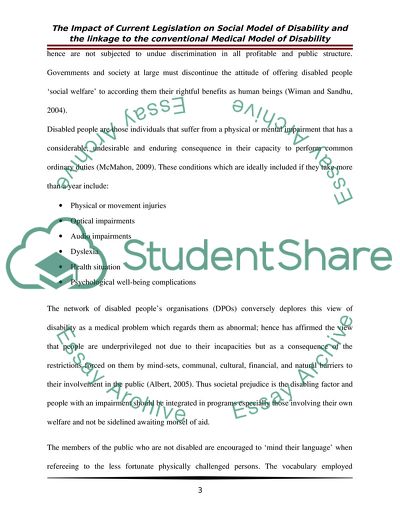Cite this document
(The Impact of Current Legislation on Social Model of Disability Literature review, n.d.)
The Impact of Current Legislation on Social Model of Disability Literature review. https://studentshare.org/sociology/1744324-discuss-the-extent-to-which-current-legislation-relating-to-disability-supports-the-social-model-and-how-much-it-still-reflects-a-medical-model-of-understanding-disability
The Impact of Current Legislation on Social Model of Disability Literature review. https://studentshare.org/sociology/1744324-discuss-the-extent-to-which-current-legislation-relating-to-disability-supports-the-social-model-and-how-much-it-still-reflects-a-medical-model-of-understanding-disability
(The Impact of Current Legislation on Social Model of Disability Literature Review)
The Impact of Current Legislation on Social Model of Disability Literature Review. https://studentshare.org/sociology/1744324-discuss-the-extent-to-which-current-legislation-relating-to-disability-supports-the-social-model-and-how-much-it-still-reflects-a-medical-model-of-understanding-disability.
The Impact of Current Legislation on Social Model of Disability Literature Review. https://studentshare.org/sociology/1744324-discuss-the-extent-to-which-current-legislation-relating-to-disability-supports-the-social-model-and-how-much-it-still-reflects-a-medical-model-of-understanding-disability.
“The Impact of Current Legislation on Social Model of Disability Literature Review”. https://studentshare.org/sociology/1744324-discuss-the-extent-to-which-current-legislation-relating-to-disability-supports-the-social-model-and-how-much-it-still-reflects-a-medical-model-of-understanding-disability.


